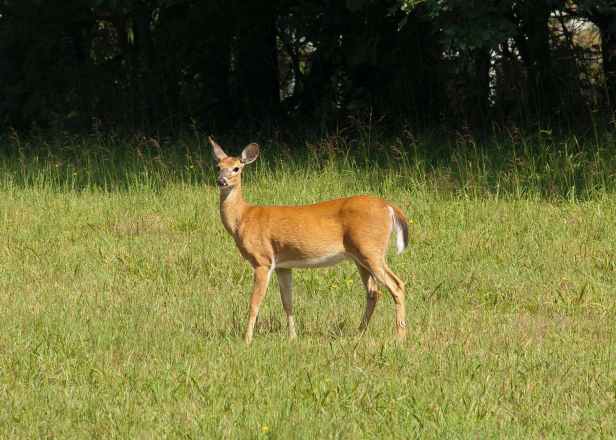Maine Issues ‘Do Not Eat’ Advisory for Deer Harvested Near PFAS-Contaminated Fields in Fairfield Area
By Dennis Hoy | The Portland Press Herald | November 23, 2021

Read the full article from Dennis Hoy (The Portland Press Herald)
"State officials said they have found high levels of ‘forever chemicals’ in some deer harvested in the Fairfield area and on Tuesday issued a do-not-eat advisory for deer taken in the region.
Fairfield has been the focal point of state testing for per- and polyfluoroalkyl substances, also known as PFAS. The do-not-eat area includes all of Fairfield, and extends into parts of Waterville, Norridgewock, Skowhegan, Oakland, Smithfield, Clinton and Benton.
The advisory area includes farm fields that have been contaminated by spreading municipal or industrial sludge for fertilizer that contained PFAS. The substances – used in products ranging from non-stick cookware to carpets, food packaging and firefighting foams – are known as ‘forever chemicals’ because they are very slow to break down and can be found in soil, water, plants and animals. These chemicals can increase the risk of certain types of cancer, elevate blood pressure during pregnancy, can cause liver and kidney problems, and can impair the immune system.
The Maine Department of Inland Fisheries and Wildlife, working in conjunction with the Maine Center for Disease Control and Prevention, said Tuesday that it has detected high levels of PFAS in five of eight deer that were taken in close proximity to fields that had extremely high PFAS levels. Those deer had levels high enough in their meat to warrant a recommendation not to be eaten at more than two or three meals a year.
The advisory area extends 5 miles out from the Ohio Hill Road area because that location was found to have high PFAS levels, and studies have shown deer can travel up to 5 miles during seasonal migration. The Kennebec River is a barrier to deer movements, so the advisory area does not extend east of the river.
Three other deer were tested from fields with lower PFAS levels that were two miles away. While those deer had lower PFAS levels, they were still high enough to warrant a recommendation to be eaten in less than one meal per week. Out of an abundance of caution, the IF&W decided to issue a do-not-eat advisory for all deer in the area of the Fairfield PFAS sites.
‘There are very few things that knock me off the rails, but this knocked me sideways,’ said David Trahan, executive director for the Sportsman’s Alliance of Maine and a former Maine legislator.
His organization represents the interests of more than 8,000 dues-paying members and about 30,000 fish and game club members.
‘Obviously our community is concerned because if you can’t harvest deer, then you can’t manage the deer population,’ he said. ‘But, this news goes way beyond deer hunting. It has the potential to affect our food and water sources. It’s a big issue and boy we have to be careful.’
Hunters who have already killed deer in the area should not eat the deer, and instead dispose of them in the trash or landfill, state officials said. Anyone who has already hunted a deer in the advisory area can reach out to the state and the department will offer them an additional deer permit in the 2022 hunting season.
The advisory area includes multiple farm fields. Deer feeding in those fields have ingested the chemicals and now have PFAS in their meat and organs, according to the state. Sludge from paper mills or wastewater treatment plans were applied as fertilizer to those fields. The sludge contained high levels of the ‘forever chemicals.’
‘Recent testing of deer harvested in the area show elevated levels of PFAS in both the meat and liver of deer,’ IF&W Commissioner Judy Camuso said in a statement. ‘We take the elevated levels seriously and advise people not to eat deer that were harvested in these areas'”…
This content provided by the PFAS Project.
Location:
Topics: